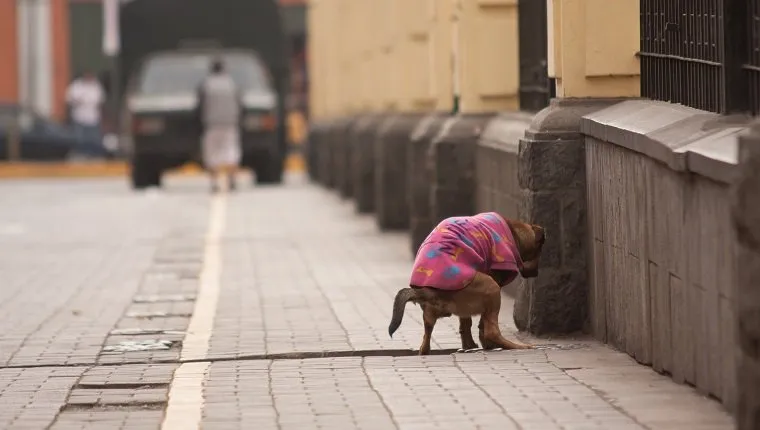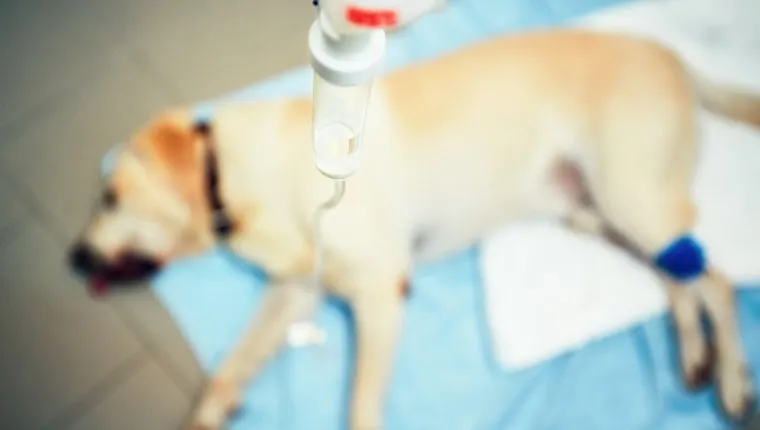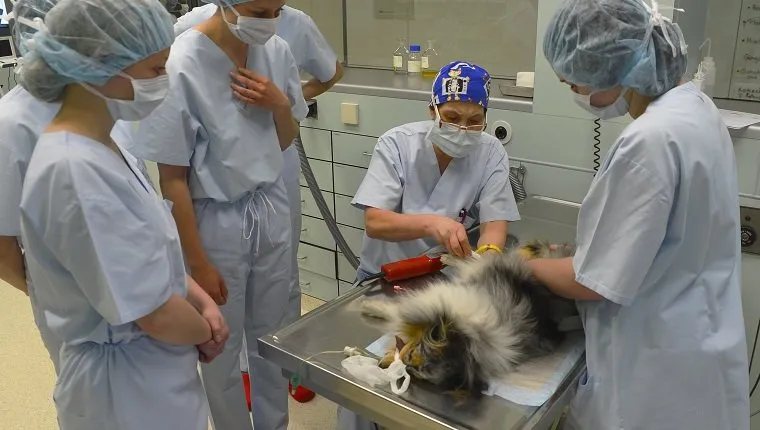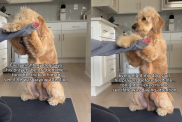Intussusception in dogs happens when a segment of the large or small intestine telescopes into a nearby portion of the digestive tract. It’s also referred to as “telescoping intestine.”
While intussusception can happen anywhere along the gastrointestinal tract, it usually occurs in the middle of the small intestine or where the small intestine joins the large intestine. It can be deadly because it can cause gastrointestinal blockage or cut off blood supply and kill the affected tissue.
While some cases in dogs spontaneously resolve themselves with no known explanation, most dogs who suffer from the condition require surgery for treatment. If you see the signs of intussusception in your dog, then you should consult your veterinarian right away for a proper diagnosis.
Here’s what you should know about the symptoms, causes, and treatments for intussusception in dogs.
Symptoms Of Intussusception In Dogs

The symptoms of intussusception in dogs usually begin when the condition causes a partial or total blockage of the digestive tract. These symptoms will likely worsen quickly and, without treatment, result in poor blood supply to tissue in the intestines.
Portions of the intestines may die and decay, which releases dangerous toxins into the body. This can result in organ failure death within a matter of a few days.
If you see the following symptoms in your dog, get to your vet right away for treatment:
- Vomiting (the vomit may be bloody or dark and have an odor of feces)
- Diarrhea, usually bloody
- Straining to defecate
- Abdominal pain
- Abdominal distension
- Regurgitation
- Loss of appetite
- Weight loss
- Shock
Causes Of Intussusception In Dogs

It’s often hard to find the cause of intussusception in dogs. That’s partially because any condition that causes inflammation, known as enteritis, or affects motility, which is the contraction of muscles to move substances through the digestive tract, can be a cause.
Here are several conditions that may result in intussusception in dogs:
- Abdominal surgery
- Parasitic infection (hookworm, whipworm, and roundworm)
- Gastrointestinal obstruction
- Bacterial or viral infection (including giardia, salmonella, distemper, and parvo)
- Dietary changes
- Tumors
- Congenital collagen deficiency
The condition is most common in puppies, as 80 percent of intussusception cases occur in dogs under the age of one year old. Generally, the affected puppy will be under three months of age. It is not generally understood why this happens.
Treatments For Intussusception In Dogs

Treatment for intussusception in dogs usually begins with intravenous fluids to fight dehydration caused by excessive vomiting and diarrhea. Dogs usually need surgery to correct the issue.
Sometimes the vet can reduce intussusception through the surgery, but often the bowel suffers too much damage, or reversing the condition is not possible. If that’s the case, the vet may remove part of the intestine, then join together the area around the removed intestine.
Vets can prescribe antibiotics and pain medication as dogs recover to avoid infection and provide comfort.
The vet will address the cause of the condition if they can find it. Gastrointestinal blockage, for example, may require surgical intervention. Some infections may be fought with antibiotics. Vets may also prescribe dietary changes if necessary.
It is important to monitor dogs’ condition and keep up with follow-up vet visits. Because the rate of recurrence may be as high as 20 percent, it’s necessary to follow veterinary instructions closely to prevent it.
Do you keep an eye out for unusual symptoms in your dog? Do you take your dog to the vet to catch problems like intussusception early? Then let us know in the comments below!









